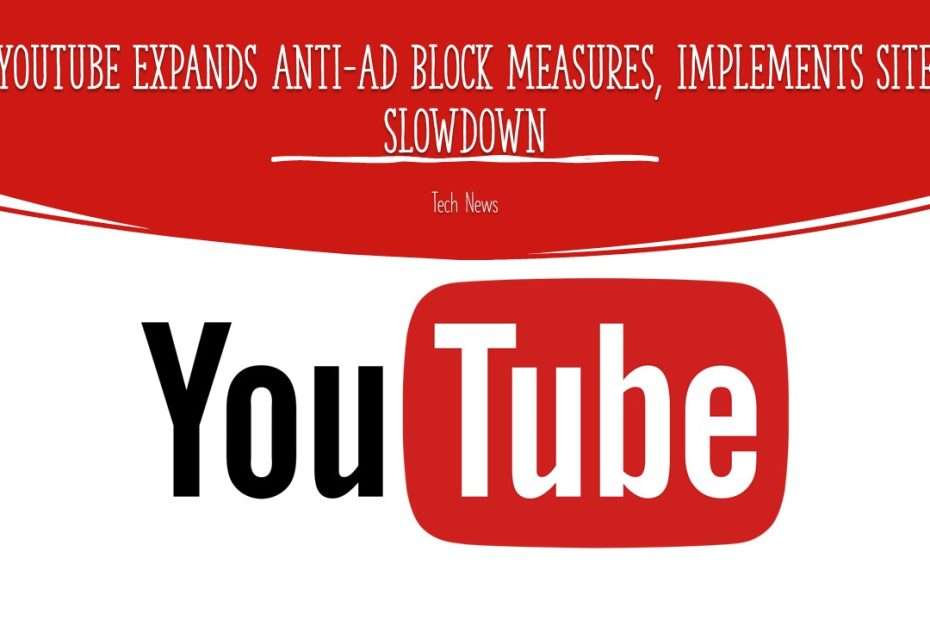YouTube has escalated its efforts in combating ad-blocker usage, introducing a new measure affecting a broader user base. This initiative involves implementing a site slowdown when the platform detects the presence of ad-blocking software, deliberately creating a less-than-optimal viewing experience for users engaging in this practice.
An update on this development reveals that the slowdown issues seem to be specific to users employing Adblock/Adblock Plus. This discrepancy is attributed to a bug in the software, leading to a negative impact on the viewing performance. Interestingly, other ad blockers, such as uBlock Origin, have not experienced similar problems on the YouTube platform. It underscores the importance of considering the specific ad-blocking tools in use when assessing the impact of YouTube’s measures on user experience.
In November, YouTube transitioned its ad-blocking methods from an experimental phase to a comprehensive global initiative. The primary goal of this effort is to deter users from circumventing the platform’s advertisements, ultimately encouraging them to either watch the ads or consider subscribing to YouTube Premium. The shift reflects YouTube’s commitment to addressing the challenge of ad avoidance and promoting its premium subscription service as an alternative for users seeking an ad-free experience.
YouTube initially tackled the issue of ad-blocker usage by issuing warnings to users through popups. These popups explicitly notified users that the utilization of ad-blocking software was in violation of YouTube’s terms of service. The intention behind this approach was to prompt users to take corrective actions, compelling them either to disable their ad-blocking software or opt for a premium subscription – YouTube Premium – to maintain uninterrupted access to content.
Through these warnings, YouTube aimed to emphasize the importance of adhering to its terms of service and to encourage users to support the platform by engaging with its advertising ecosystem or by opting for a premium, ad-free experience. This strategy demonstrated YouTube’s proactive stance in addressing the challenges posed by ad-blocker usage, attempting to strike a balance between user preferences and the platform’s need to sustain its revenue model.
In response to its efforts, YouTube witnessed a notable surge in adblock uninstalls, indicating the effectiveness of the initial campaign against ad-blocker usage. Despite this success, the platform sought additional measures to further incentivize users to either watch advertisements or subscribe to its premium service.
To achieve this goal, YouTube introduced intentional delays in video loading, specifically targeting users employing ad-blocking software. The deliberate delay, amounting to about five seconds, was implemented as a measure to create a “suboptimal viewing” experience for individuals detected using ad blockers. YouTube officially confirmed that this intentional slowdown was a direct consequence of the platform’s ad-blocking detection mechanisms.
By introducing these measures, YouTube aimed to reinforce the importance of engaging with its advertising content and, at the same time, promote its premium subscription service as an alternative for users seeking an ad-free viewing experience. This strategy showcased YouTube’s commitment to addressing ad-blocker challenges and finding innovative solutions to maintain a sustainable revenue model.

Several Reddit users have recently observed laggy and unresponsive behavior on YouTube, indicating a potential wider rollout of the platform’s slowdown punishment. This issue, reported by 9to5Google, manifests as slow video buffering, incorrect previews loading, and difficulties entering fullscreen or theater mode without requiring a site refresh. Notably, even Premium subscribers are experiencing performance throttling if they have an active adblocker enabled for any other reason. To resolve these issues, users are left with the only option of disabling the specific adblocker they have in use.
According to the publication, YouTube has employed an artificial timeout within its code to simulate a laggy internet connection for users employing adblockers. This strategic move is part of YouTube’s ongoing efforts to discourage ad-blocker usage and encourage users to engage with its advertising content or subscribe to YouTube Premium, which has faced criticism for introducing unskippable 30-second ads on its TV app and raising the subscription cost last year to $13.99 per month for an ad-free experience on YouTube and YouTube Music. Various subscription plans, including student and family options, are available to cater to different user needs.
Maybe you liked other articles?

